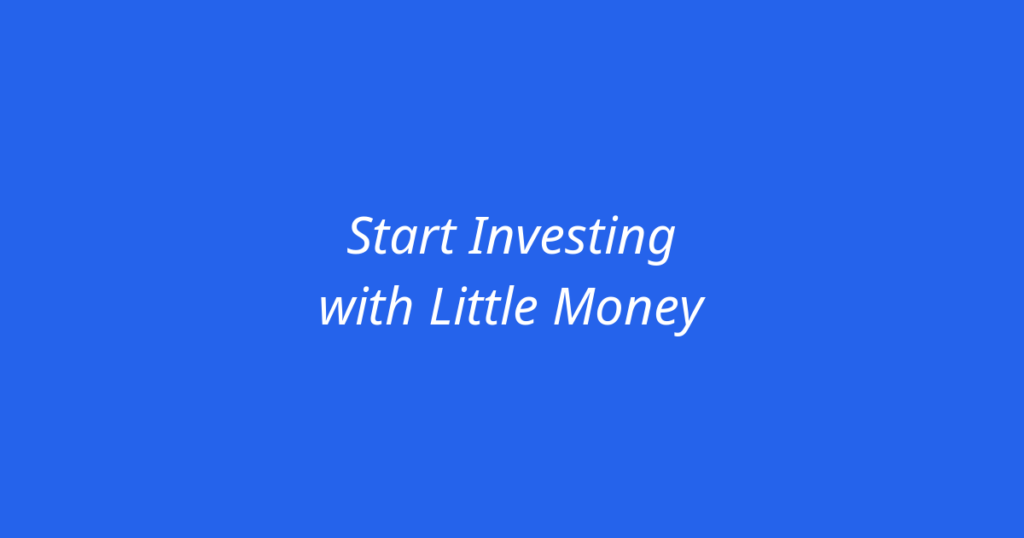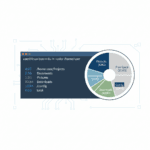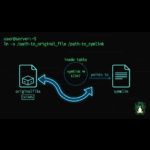I didn’t start investing until I was 29 years old. I kept telling myself I’d start when I had “enough money.” When I finally ran the numbers, I realized that waiting those four years cost me roughly $40,000 in potential growth. That stung.
Here’s what nobody tells you: You don’t need thousands of dollars to start investing. You can literally start with $5. I’m not exaggerating. The biggest barrier isn’t money—it’s the psychological hurdle of thinking you’re not “ready” yet.
If you’re reading this, you’re probably where I was at 25: you know you should be investing, you’ve heard about compound interest, but you’re stuck between student loans, rent, and the nagging feeling that $100 a month isn’t “enough” to bother with. Let me tell you something that’ll save you years of regret—it absolutely is enough.
Why Starting Small Beats Waiting for “Enough Money”
The average American makes their first investment at 27 years old, and 80% of investors wish they’d started earlier. I get it—I was part of that statistic. But here’s the math that should kick you into action.
Let’s say you invest $50 per month starting at age 25 versus waiting until you’re 35 to invest $200 per month. Assuming a 10% average annual return (the S&P 500’s historical average):

- Starting at 25 with $50/month: By age 65, you’ll have approximately $316,000
- Starting at 35 with $200/month: By age 65, you’ll have approximately $379,000
You’d need to invest four times as much per month if you wait ten years, and you’d still barely come out ahead. That’s compound interest working its magic—or punishing your procrastination.
The point isn’t the exact numbers. The point is this: time in the market beats timing the market, and starting small beats not starting at all.
Step 1: Get Your Financial House in Order (The Boring But Critical Stuff)
Before you invest a single dollar, you need to handle three things. Skip these and you’re building a house on quicksand.
Build a Starter Emergency Fund
I know, I know—this isn’t sexy. But listen: if you invest $500 and then your car breaks down next month, you’re either going into credit card debt at 24% interest or selling your investments at a loss to cover the repair.
You need at least $1,000 in a savings account before investing. This is your “oh shit” fund. Not three months of expenses yet—that comes later. Just enough so a flat tire doesn’t derail everything. Keep this in a high-yield savings account earning 4-5% instead of letting it rot at 0.01% in a traditional bank.
Once you’re investing consistently, work your way up to 3-6 months of expenses saved. But don’t let perfection paralyze you—$1,000 is enough to start.
Pay Off High-Interest Debt First
If you have credit card debt at 22% interest, you’re not going to beat that with investments. The S&P 500 averages 10% annually. Math doesn’t lie.
Pay off any debt above 10% interest before investing. Student loans at 4-6%? You can invest while paying those down. The psychological benefit of building wealth while managing debt is worth more than the 2-4% spread.
Grab Any Free Money From Your Employer
If your employer offers a 401(k) match, this is literally the only time someone will give you free money for doing nothing. If they match up to 4% of your salary, contribute at least 4%. That’s an instant 100% return before your money even hits the market.
This takes priority over everything else. Free money first, then emergency fund, then high-interest debt, then additional investing. There’s more nuance on this in my guide about whether to max out your 401k or pay off debt.
Step 2: Figure Out How Much You Can Actually Invest
You don’t need 15% of your income to start. Hell, you don’t even need 5%. You need something.
Here’s how I figured it out when I was broke: I tracked every dollar I spent for one month. Not to judge myself—just to see where my money actually went. Turns out I was spending $140 a month on food delivery and $65 on streaming services I barely used.
I didn’t cut everything. But I found $75 a month I could redirect to investing without feeling it. That was my number.
If you’re not tracking your spending, the 50/30/20 budget rule is a solid starting framework: 50% needs, 30% wants, 20% savings and investing. But honestly? Start with whatever you can do consistently. $25 a month beats $0 a month by infinity percent.
Step 3: Choose Your Investment Account (It’s Simpler Than You Think)
This is where most people get stuck in analysis paralysis. There are basically three types of accounts, and your situation determines which one you need.
Retirement Accounts (401(k), IRA)
These are tax-advantaged, meaning the government gives you a tax break for using them. The catch? You generally can’t touch the money until you’re 59½ without penalties.
- 401(k): Through your employer. If they offer a match, start here.
- Traditional IRA: You get a tax deduction now, pay taxes when you withdraw in retirement.
- Roth IRA: You pay taxes now, withdraw tax-free in retirement.
Which IRA should you choose? I covered this extensively in my Roth IRA vs Traditional IRA comparison, but the short version: if you’re young and in a low tax bracket, Roth wins. You can contribute up to $7,000 in 2025 ($8,000 if you’re 50+).
Taxable Brokerage Account
No tax benefits, but complete flexibility. You can withdraw anytime without penalties. This is what I use for investing beyond retirement accounts and for goals shorter than retirement (like saving for a house down payment in 10 years).
Robo-Advisor Account
Same as a taxable account, but the platform manages your investments for you. Costs 0.25-0.50% annually. Worth it if you want to be completely hands-off.
For most people starting out with little money, I recommend opening a Roth IRA at Fidelity, Charles Schwab, or Vanguard. All three have $0 minimums to open, charge $0 commissions on stocks and ETFs, and let you buy fractional shares with as little as $1.
Step 4: What to Actually Buy (The Part Everyone Overthinks)
Here’s where people spend months researching individual stocks, reading analyst reports, and convincing themselves they can beat the market. Let me save you the time and money: you can’t, and you don’t need to.
For your first $10,000 invested, you need exactly one thing: a total market index fund.
That’s it. One fund. It owns thousands of companies, requires zero research, and has historically returned about 10% annually over long periods. Is it exciting? No. Will it work? Yes.
Here are the exact funds I recommend:
- Fidelity: FZROX (Fidelity ZERO Total Market Index Fund) – 0% expense ratio
- Vanguard: VTI (Vanguard Total Stock Market ETF) – 0.03% expense ratio
- Charles Schwab: SWTSX (Schwab Total Stock Market Index Fund) – 0.03% expense ratio
Any of these will work. Pick based on where you opened your account. I wrote a full guide on how to invest in index funds if you want the deep dive, but honestly, buying one of these three funds is 90% of the battle.
Should You Invest in Individual Stocks?
Eventually, maybe. Not now. Here’s why: 51% of new investors don’t understand how investment fees work, and 56% of experienced investors say chasing short-term gains is what destroys beginner accounts.
Individual stocks are great once you’ve built a solid index fund base and actually understand what you’re doing. Until then, they’re an expensive way to learn humility.
Step 5: Automate Everything (So You Can’t Sabotage Yourself)
This is the most important step, and it’s the one that finally made investing stick for me.
Set up automatic transfers from your checking account to your investment account on the same day you get paid. I use dollar cost averaging—investing the same amount at regular intervals regardless of market conditions.
Here’s my actual setup:
- Payday is the 1st and 15th of each month
- $200 automatically transfers to my Roth IRA on the 2nd and 16th
- Another $300 goes to my taxable brokerage on the same days
- Everything automatically invests into FZROX
I don’t think about it. I don’t see the money. It just happens. That’s how you win—by removing your emotions from the equation.
Your first automated investment might be $25 every two weeks. That’s perfect. The amount doesn’t matter as much as the consistency.
Best Platforms for Investing Small Amounts in 2025
Not all brokerages are created equal when you’re starting with little money. Some are perfect for small investors; others will nickel-and-dime you into mediocrity.
Best Overall: Fidelity
$0 minimum to open, $0 commissions, and you can buy fractional shares for as little as $1. Plus, they have FZROX—a total market fund with literally zero fees. I use Fidelity for my Roth IRA.
Best for Simplicity: Charles Schwab
Similar to Fidelity with $0 minimums and commissions. Their “Stock Slices” program lets you buy fractional shares of S&P 500 companies for as little as $5. Great if you eventually want to own individual stocks alongside index funds.
Best for App Experience: Robinhood
Look, Robinhood gets a lot of hate, and some of it’s deserved. But for pure ease of use? It’s unmatched. The app makes investing feel like checking Instagram. Just don’t fall into the trap of day trading or buying crypto because it’s easy.
Best for Hands-Off Investing: Betterment or Wealthfront
Robo-advisors that do everything for you. You set your goals and risk tolerance, and they handle the rest. They charge 0.25-0.50% annually, but if that fee is what it takes for you to actually invest, it’s worth it.
Skip These: Acorns and Stash
Both charge monthly fees ($3-9/month) that absolutely destroy returns when you’re investing small amounts. If you’re only investing $50 a month, a $3 monthly fee is 6% of your investment—gone before it even enters the market. Terrible deal.
The Biggest Mistakes That’ll Destroy Your Progress
I’ve made every mistake on this list. Learn from my expensive education.
Waiting for the “Right Time” to Invest
The market is always at an all-time high, about to crash, or recovering from a crash. There’s never a perfect time. The best time was yesterday. The second-best time is today.
Checking Your Account Every Day
I did this for the first six months. It’s torture. The market goes up and down daily—that’s what it does. Checking constantly makes you panic sell when things drop. Check monthly at most, quarterly is better.
Selling When the Market Drops
The average investor underperforms the market by 2-3% annually because they panic sell during downturns. The market drops 10% about once a year. It’s normal. If you sell when this happens, you lock in losses and miss the recovery.
During March 2020, the market dropped 34%. People who sold lost a third of their money. People who held were back to even by August and up 40% by the end of 2021. The winners were the ones who did nothing.
Thinking You Need to Pick Winning Stocks
90% of professional money managers can’t beat the S&P 500 over 15-year periods. You’re not going to do it either. Neither am I. Buy the whole market through an index fund and win by not losing.
Letting Analysis Paralysis Stop You
There’s always more to learn. You could spend a year researching and still not feel “ready.” Meanwhile, that year of potential compound growth is gone forever. Perfect is the enemy of good. Good enough today beats perfect someday.
How to Increase Your Investments Over Time
Starting small is smart. Staying small forever is not. Here’s how I’ve scaled up my investing over five years:
Year 1: $75/month ($900 total) – Just proved I could do it consistently
Year 2: $150/month ($1,800 total) – Got a raise, immediately increased contributions
Year 3: $300/month ($3,600 total) – Paid off my car, redirected that payment
Year 4: $500/month ($6,000 total) – Maxed out my Roth IRA for the first time
Year 5: $850/month ($10,200 total) – Added taxable brokerage contributions
Every time you get a raise, increase your investment contributions by at least half of the raise amount. If you get a $200/month raise, put $100 toward investing. You’ll never miss it because you never had it before.
What Your First Year of Investing Actually Looks Like
Let’s get real about expectations. If you invest $100/month for a year at 10% returns, you’ll end up with about $1,257. That’s $1,200 you invested plus $57 in growth.
That $57 doesn’t sound exciting, does it? Here’s what makes it exciting: In year 10, that original money will have grown to roughly $3,500. By year 30, it’s $23,000. That’s from just one year of $100/month investments.
The first year feels slow. The first five years feel slow. Then compound interest hits its stride and things get interesting fast. This is a marathon, not a sprint.
The Three-Month Challenge That Changes Everything
Here’s what I want you to do: Commit to investing for three months. Pick an amount you won’t miss, set it on autopilot, and forget about it.
After three months, look at your account. You’ll see three things:
- You have more money than when you started
- You never missed the money you invested
- The world didn’t end, the market didn’t crash, and investing wasn’t scary
That moment—when you realize it’s working and you can do this—is when everything changes. That’s when you go from “trying to invest” to “being an investor.”
The confidence you build in those first three months is worth more than the money. It proves you can do this. And once you know you can do it, increasing the amount becomes easy.
Beyond the Basics: What Comes Next
Once you’ve been investing consistently for 6-12 months, you can start optimizing. But don’t skip to this section if you haven’t started—you’re just procrastinating.
Maxing Out Tax-Advantaged Accounts
Work toward maxing out your Roth IRA ($7,000/year in 2025). If you’ve done that and are still saving more, then max your 401(k) ($23,000/year in 2025). After that, taxable brokerage accounts are your friend.
Diversifying Into Bonds
When you’re young, 100% stocks is fine. As you get older or closer to needing the money, adding bonds reduces volatility. A common rule: your age as a percentage in bonds (30 years old = 30% bonds, 70% stocks).
International Exposure
Some investors like adding international stock funds for diversification. I keep 20% of my portfolio in international index funds. It’s not necessary when starting out, but it’s worth considering once you have $25,000+ invested.
Real Estate and Alternative Investments
REITs (Real Estate Investment Trusts) let you invest in real estate through the stock market. Commodities, crypto, individual stocks—these all have a place in a portfolio eventually. But they’re garnish, not the main course. Get your index fund foundation solid first.
The Mental Game: How to Not Lose Your Mind
The hardest part of investing isn’t the strategy—it’s the psychology.
Your account will go down. Sometimes a lot. In 2022, the market dropped 18%. If you had $10,000 invested, you watched it become $8,200. That’s painful.
But here’s the thing: it wasn’t actually $10,000. Some of it was gains you hadn’t realized yet. And if you kept investing through 2022, you bought shares on sale. By the end of 2023, the market was up 26%, and you made money on everything you bought during the downturn.
The investors who win are the ones who keep buying when everyone else is panicking. It’s that simple and that hard.
What I Would Tell My 25-Year-Old Self
If I could go back and give myself one piece of advice, it would be this: Start with $50 a month and don’t stop.
Not “wait until you make more money.” Not “research for six more months.” Not “wait for the market to drop.” Just start with whatever you can afford and never stop.
The amount doesn’t matter nearly as much as the consistency. I wasted four years waiting to feel ready. Those four years cost me tens of thousands in unrealized gains.
You don’t need to be rich to invest. You need to invest to become rich. And you need to start before you feel ready, because you’ll never feel completely ready.
You now know more than I did when I started. You know where to open an account, what to buy, and how to automate it. The only question left is whether you’ll actually do it.
Open the account this week. Even if you don’t fund it immediately, just open it. That small action breaks the inertia. Then set up your first automatic contribution, no matter how small. Then forget about it and let time do the heavy lifting.
I started at 29 and wish I’d started at 25. You’re reading this now—don’t let future you look back and wish you’d started today.







